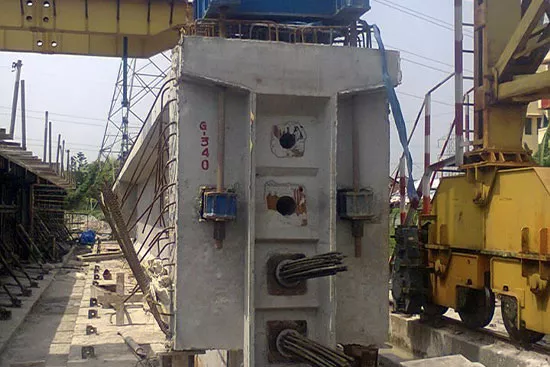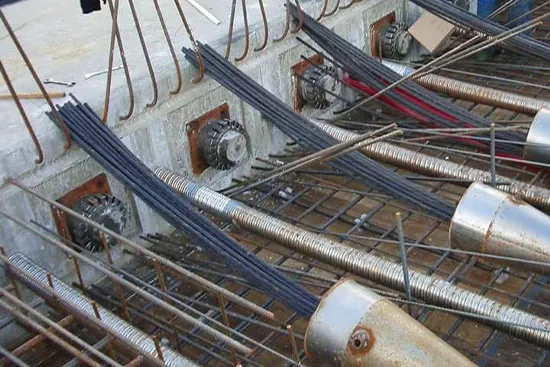Prestressed concrete calculation
Need a prestressed concrete analysis?
Pretensioned structures’ calculation is an advanced technique in civil engineering that has revolutionized the way large-scale projects are designed and built. It involves a process of design and analysis in which concrete elements are subjected to compressive forces prior to the application of external loads. These intentional forces are generated through tensioned cables or steel bars, providing the structure with enhanced resistance to loads and stresses. This technique is widely used in bridges, viaducts, tall buildings, and other projects where high load capacity and structural efficiency are required.Steps in prestressed concrete calculations
Load analysis
Pretension selection
Section design
Verification and approval
Importance of prestressed concrete calculation
- Increased Strength and Load Capacity: Pretensioned structures use cables or steel bars that are pre-stressed before applying service loads. This technique generates an internal compressive force in the concrete, resulting in greater strength and load capacity of the structure. It allows to design thinner and lighter elements that can withstand significantly higher loads compared to conventional structures.
- Reduced Deformations: The pretension applied to the concrete helps reduce deformations under service loads, resulting in greater stability and durability of the structure over time. This is especially important in bridges and structures with large spans, where excessive deformations can affect performance and safety.
- Less Cracking: The presence of pre-existing compressive forces helps prevent the formation of cracks in the concrete under service loads. This improves the aesthetics of the structure and contributes to its protection against corrosion and other environmental damage.
- Efficient Use of Materials: Pretensioned structures allow for a more efficient use of materials, as it is possible to reduce the sections of concrete and the required reinforcing steel compared to conventional structures. This not only reduces construction costs but also has a positive impact on the sustainability and environmental footprint of the project.
- Improved Load Distribution Clarity: Pretensioning enables more precise control and prediction of the internal forces within the structure. This facilitates structural design and analysis, leading to a safer and more reliable construction.
- Reduced Construction Time: Pretensioned structures can be manufactured under controlled conditions off-site and then transported and installed on-site. This speeds up the construction process and minimizes delivery times, resulting in time and cost savings.
Contact us
Basic information on data protection
Responsible: Cero Metros Cuadrados, S.L.
Purposes: Manage the sending of information that you request. Sending commercial communications.
Legitimation: Consent. You can withdraw consent at any time.
Recipients: Your data will not be transferred to third parties except in case of legal obligation.
Data subject's rights: To access, oppose, rectify and have their data deleted, as well as other rights as explained in the additional information.
You can access additional and extended information at this link.



